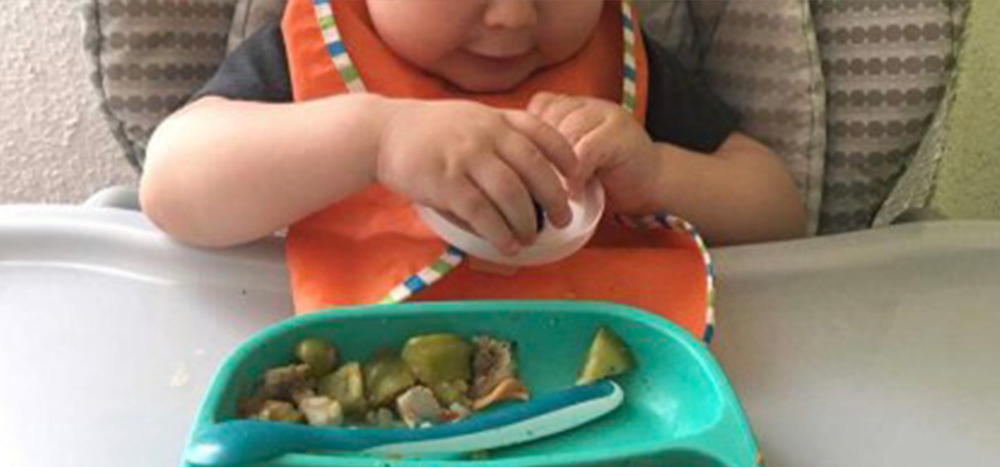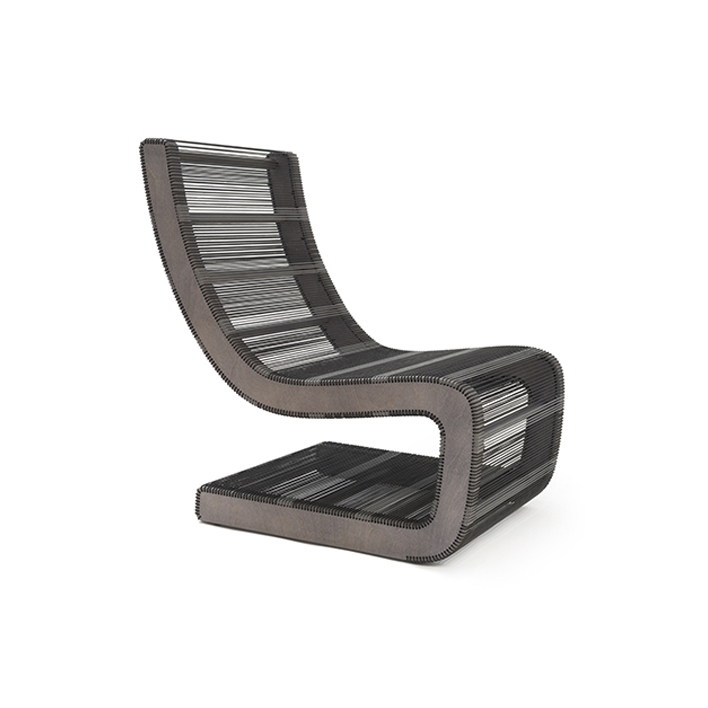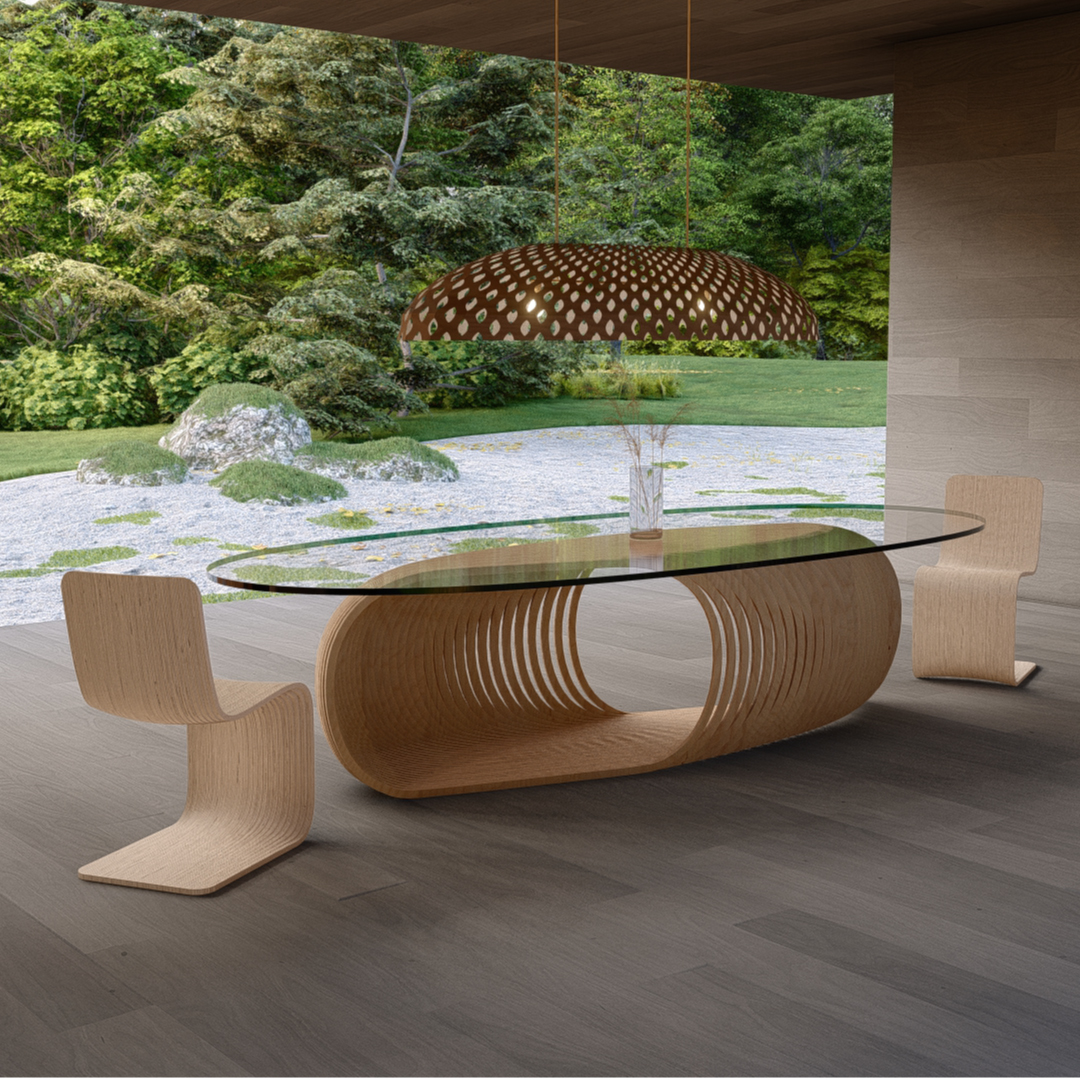The other day, we were having breakfast in a restaurant. Luca was eating eggs Florentine, when suddenly, a woman approached us with her three-year-old daughter. “It’s so nice to see your son eating. I love that he’s not fussy. For me, it’s so hard to get my daughter to eat. I don’t know what she lives off, to be honest.” My response was, “Thank you. To be honest, he eats most things because I never gave him purees.” Her reaction was just like all the others I receive from parents who have only ever fed their babies that: she was shocked. When Luca was 5 months old, the paediatrician gave us the green light to start feeding him solids. We started with the classic, rice cereal, and it was horrible to see Luca crying and turning his face away to avoid eating. It was a nightmare. He was too young and not ready to start eating that. It was then that my husband and I decided to wait until he was bigger and try Baby Led Weaning, a method that’s free of purees and where the children take charge of their own nutrition. I’ll say with confidence, it’s the best thing we’ve done. Now, Luca eats everything. I’ll confess that at the start I didn’t know much about this process. However, I decided to do some research. I began reading articles on this method, weighed up the pros and cons and the pros won. After discussing it with my husband, or in other words, attempting to sell the idea to him, we found a wonderful, four-week course that taught us more about this method. I also understood why Luca cried so much with purees that he simply did not want. This was down to the fact that, literally and physically, he was just not ready.
The World Health Organisation recommend the following requisites to be able to apply the BLW method:
- For the baby to be 6 months or over.
- For the baby to be able to stay seated with a firm trunk of the body and without any assistance.
- For the baby to have lost their extrusion reflex (this reflex makes them push out anything that enters their mouth with their tongue).
When we finished the course, we still waited two more weeks as Luca could still not sit up on his own. It was frustrating at first to start this method because family members were taken aback by it, insisting for me to give him purees because it was what he needed. I fought a lot with my mum over this. It’s clear that she did it with the best intentions, seeing as she was worried that I was trying something different with her grandson. Despite this, after a few months, she realised that the method worked well. Luca ate everything that was prepared at home. If there were things like pasta with organic sauce and broccoli or pastries with meat, Luca ate them too. We certainly had to make a few changes when preparing these foods because of restrictions for babies like grease and salt, due to their livers not being able to process them properly yet. Thankfully though, in this household, we’re not friends with salt, sugar or greasy foods, so for us, this wasn’t too hard.
You may be wondering what the benefits were of bringing this method into the family. Well, there have been many that I’ll share with you now:
- We can share more family moments and chats include Luca.
- I can see the enjoyment Luca gets out of food.
- He’s not fussy and eats pretty much anything. He even likes sushi!
- He loves water, fruits and vegetables.
- When we go to a restaurant, it’s super easy to order food from the adult’s menu rather than the children’s menu, which generally includes things like pizza and burgers.
- He even knows where to eat, which can help avoid obesity.
- He’s been able to eat using cutlery and drink directly from a cup (with or without a straw) since he was one.
- He has healthy eating habits. This doesn’t mean that he never gets to eat the odd biscuit or a piece of cake.
- He’s exposed to different textures and tastes.
- I don’t worry about over-cooking, I can always blend what’s been prepared.
These are all perfect examples of why this method has been a blessing to our lives. It’s because of this that I advise you to not pay too much attention to comments or tips that go against what you think is best for your child.
What about you, do you prefer purees or BLW?
With love,
Chari
POR QUÉ HACER BLW CON MI HIJO CAMBIÓ MI VIDA
El otro día estábamos desayunando en un restaurante y Luca estaba comiendo unos huevos escondidos al estilo florentino. De repente se nos acerca una mamá con su hija de tres años y nos dice: "qué rico ver comer a su hijo. Me encanta que no sea melindroso. Con mi hija me cuesta muchísimo que coma algo. No se de qué vive, la verdad." Mi comentario fue: "Gracias. La verdad es que come de todo porque nunca le di papillas". La expresión de la mamá fue la misma que recibo de las personas que solo le han dado papillas a sus hijos: de asombro. Cuando Luca tenía 5 meses aproximadamente el pediatra nos dio luz verde para introducirle sólidos. Empezamos con el clásico cereal de arroz, y la verdad fue horrible ver como Luca lloraba y me quitaba la cara para no comer. ¡Qué martirio! Definitivamente estaba muy chiquito y no estaba listo para empezar a comer. Fue entonces que decidimos con mi esposo esperar a que estuviera más grande y probar con Baby Led Weaning, un método libre de papillas y en el que ellos guían su alimentación. Y te digo, es lo mejor que hemos hecho. Hoy por hoy, Luca come de todo! Te confieso que al principio no sabía mayor cosa sobre este método. Sin embargo, decidí empezar mi investigación. Entonces me puse a leer cuanto artículo hablaba sobre el método, puse los pros y los contras sobre la mesa y he de decir que ganaron los pros. Después de platicarlo con mi esposo, o sea venderle la idea, encontramos un curso maravilloso de cuatro semanas en los que conocimos más a profundidad el método. También entendí por qué Luca lloraba con las papillas y no quería comer. Esto se debía a que, literal y físicamente, NO estaba listo. La Organización Mundial de la Salud recomienda cumplir los siguientes requisitos para poder aplicar el método BLW:
- Que el bebé tenga 6 meses o más.
- Que ya se mantenga sentado, con el tronco firme, sin apoyo de nada.
- Que haya perdido el reflejo de extrusión (éste reflejo les hace empujar fuera con la lengua cualquier cosa que les entre en la boca.)
Es por eso que al terminar el curso todavía esperamos dos semanas más porque Luca todavía no se mantenía sentado. Al principio fue bastante frustrante empezar con el método pues mis familiares se asustaban con el mismo y me insistían en darle papillas porque era lo que “tocaba”. Te confieso que tuve muchas peleas con mi mamá por lo mismo. Claro está, ella lo hacía con la mejor de las intenciones pues estaba probando algo nuevo con su nieto y eso la asustaba bastante. Sin embargo, al pasar de los meses, se dio cuenta que el método funcionaba muy bien. Luca comía de todo lo que se preparaba en la casa. Si habían tortitas de carne, pasta con salsa natural y brócoli, a Luca se le servía exactamente lo mismo. Definitivamente tuvimos que hacer ciertas modificaciones en la preparación de los alimentos pues no se les debe dar sal ni grasa a los bebés pues su hígado no está listo para procesarlo. Gracias a Dios en esta casa no somos amigos de la sal, azúcar y grasa, así que el proceso no fue para nada difícil. Pero te podrás estar preguntado qué ventajas trajo este método a mi familia. Pues te cuento que las ventajas han sido muchísimas. Aquí te dejo algunas:
- Compartimos todos los tiempos en familia y la platica incluye a Luca.
- Veo como Luca disfruta de la comida.
- No es melindroso y come de todo. Come hasta sushi!
- Le encanta el agua pura, las frutas y verduras.
- Cuando vamos a algún restaurante es facilísimo pedir comida pues come del menú de adultos no solo del de niños, que generalmente se basa en pizza, hamburguesas y quesadillas.
- El sabe hasta donde comer, lo cual evita la obesidad.
- Aprendió a comer con cubiertos y a tomar directamente del vaso (con o sin pajilla) desde que cumplió un año.
- Tiene hábitos alimenticios saludables. Esto no quiere decir que nunca coma una galleta o un pedazo de pastel.
- Está expuesto a diferentes texturas y sabores.
- No me preocupo de cocinar doble (preparar la comida y después licuarla).
Por todas estas razones y muchas otras es que este método ha sido una bendición en nuestra vida. Es por eso que te recomiendo no dejarte llevar por los comentarios o consejos que vayan en contra de lo que pienses que está bien para tu hijo. Y tú, ¿qué método prefieres, papillas o BLW?
Un abrazo,
Chari










